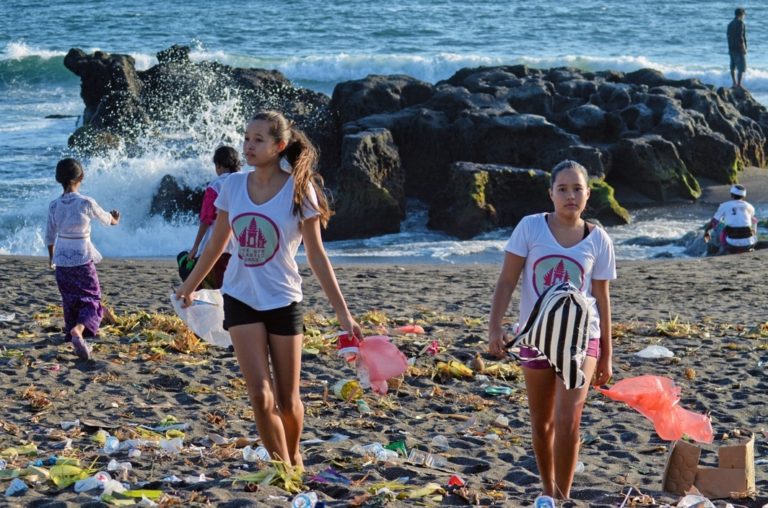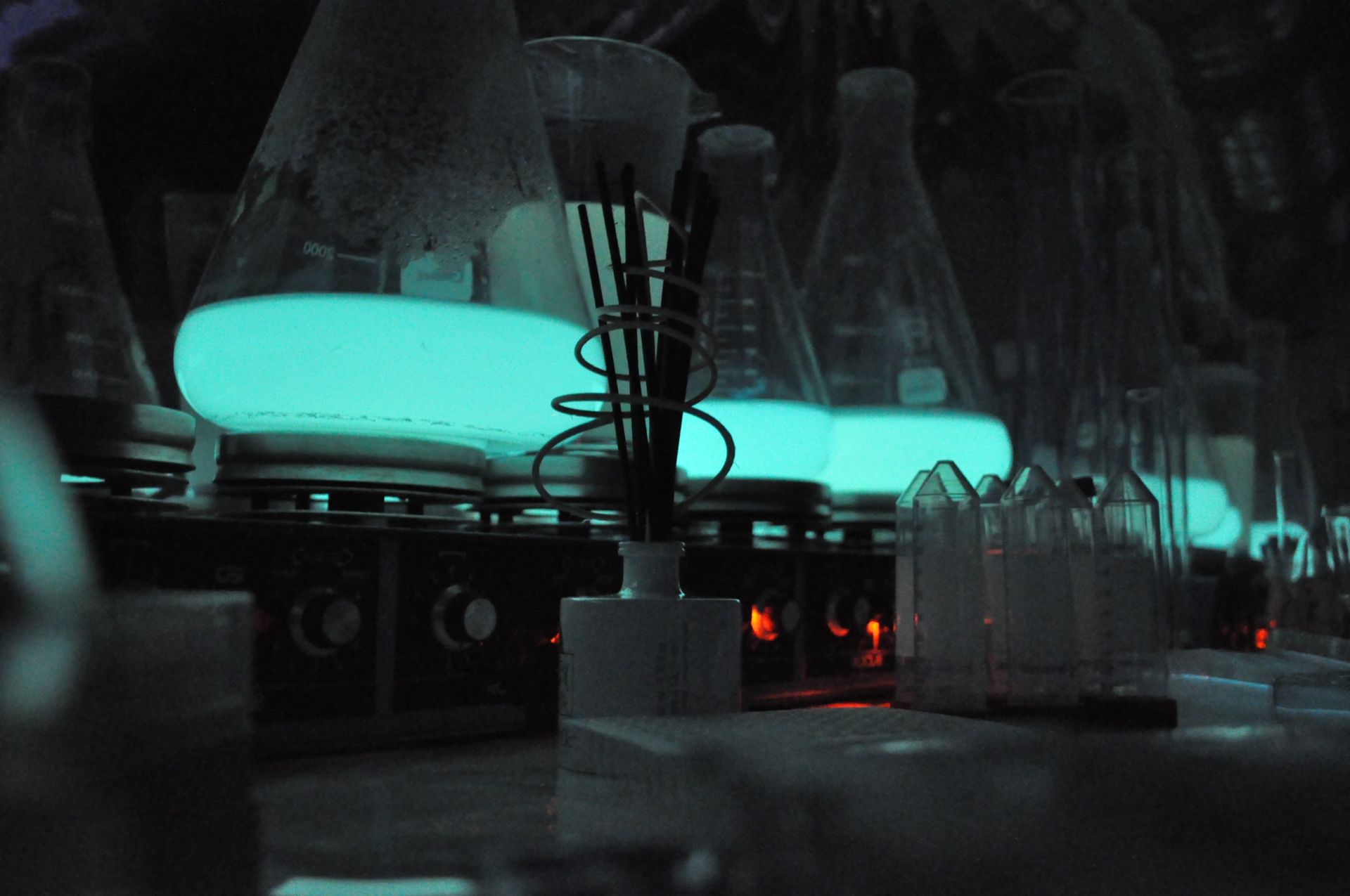2019 was a “tipping point” for child and youth activism within the United Nations and beyond…in 2020 it’s our turn to act for and with them, and in solidarity across generations, especially in the face of global crises like the COVID-19 pandemic.
The Promise and Challenge of a New Decade
The year 2020 started with a flurry of mixed messages. While the annual promise of the new year always brings forward personal ruminations on fresh beginnings, better habits and hope, this was especially true as the world embarked on a new decade. In parallel, 2020 also started with a world in turmoil. Protracted conflicts rage around the world and the science relating to climate change and environmental degradation paints a dire picture of our collective future, with latest projections noting that in a mere 50 years, billions of people may be living in areas too hot to sustain human life.
This year also marks the 75th anniversary year of the United Nations, an organization that, likewise, stands at a crossroads. We entered the new decade where the concept of multilateralism is facing significant threats from around the world, and in parallel, where this system has never been more needed to combat the universal and global threats posed by rampant inequality, climate change and unsustainable practices.
Will this pandemic be the wake-up and rallying call needed to invest in a functioning, inclusive and empowered multilateral system? Or will it be used as the catalyst to fuel more nationalistic and self-interested societies?
And then the COVID-19 crisis shocked the world — causing untold human suffering, devastating economies and crippling health care systems. The crisis has also demonstrated how immensely interconnected and interdependent we are as humans and global citizens. But the question remains: Will this pandemic be the wake-up and rallying call needed to invest in a functioning, inclusive and empowered multilateral system? Or will it be used as the catalyst to fuel more nationalistic and self-interested societies? As author Yuval Noah Harari notes in the Financial Times, “Humanity needs to make a choice. Will we travel down the route of disunity, or will we adopt the path of global solidarity? If we choose disunity, this will not only prolong the crisis, but will probably result in even worse catastrophes in the future. If we choose global solidarity, it will be a victory not only against the coronavirus, but against all future epidemics and crises that might assail humankind in the 21st century.”
The COVID-19 crisis has presented us with a unique window of time, where everyone across the globe is being forced to consider how their individual actions and behaviors affect others. It is an unprecedented moment in our lifetime, and therefore a time to reimagine what a new global social contract looks like — between nations, between generations and also between humans and the rest of the natural world — where we accept that as individuals we are responsible for each other’s health and right to a future.
We argue that creating this social contract — and thus successfully tackling global existential threats (e.g., climate change) — hinges on the meaningful engagement of children and young people — through dialogue; inclusion of their views in decision-making processes at all levels; and by working with them in partnership on solutions.
2019 — the 30th Anniversary of the Convention on the Rights of the Child, and a Seminal Year of Children Exercising Their Right to Be Heard
It is not a surprise to us that the young climate activist Greta Thunberg was named as Time Magazine’s “Person of the Year” at the end of 2019, which coincidently but quite fortuitously also happened to be the year of the 30th Anniversary of the Convention on the Rights of the Child (CRC). As the most widely ratified human rights treaty in existence, the CRC guarantees children the right (among other things) to freely express their views on matters that affect their lives and to be provided the opportunity to be heard.
Before COVID-19, one of the biggest crises dominating news headlines was the climate crisis. And the face of demanding change was the face of a young person. To the millions of young people protesting in the streets and expressing tremendous fear and anxiety about the future, the climate crisis we are facing now and in the future is a direct parallel to the fear and anxiety all of us are now experiencing with the COVID-19 pandemic.
Although to the wider public Ms. Thunberg burst onto the global stage seemingly from nowhere with a powerful, sobering and viral speech at the 2018 UN Climate Change Conference in Poland — which subsequently sparked a global movement of millions of young climate activists taking to the streets every Friday — there has been a building-up of global child and youth activism and awareness over the last several years and on issues ranging from social justice, to ending violence, to climate change.
Within the UN, the impetus for this activism was ignited in 2012, as the negotiations for the Sustainable Development Goals (SDGs) were first getting underway. The SDGs were ambitious right from their inception. Following on from the Millennium Development Goals (MDGs) adopted at the turn of the century, the SDGs aimed to mitigate some of the shortcomings of the MDGs by including an explicit focus on “leaving no one behind” and more comprehensively addressing all dimensions of sustainable development: the economic, the environmental and the social. These were explicit demands that came not just from development scholars, but from millions of people living in developed and developing contexts alike, which were collated through months of multi-stakeholder consultations taking place around the world, on- and offline.
Children and youth were among the most engaged constituency in this process, and importantly demanded a fundamental shift in the way that adults viewed them — not only as “beneficiaries” of development assistance or as a “vulnerable group” — but as agents of change, partners and stakeholders who have a right to be heard in decision-making processes and who have creative ideas and solutions for making progress on the Goals.
Although almost everyone in the world knows about COVID-19, the SDGs are not something that is broadly known or understood by the wider public, despite everyone having a stake in their achievement. Yet, the response to the crisis and the successful implementation of the SDGs are critically and inextricably linked. The COVID-19 pandemic has given the world a sobering glimpse of what the future will look like if the SDGs are not achieved: health systems not fit for purpose, leading to millions of unnecessary deaths; a generation of children whose education is interrupted, with many to never return; millions of jobs lost and people on the brink plunged back into poverty, some unable to then secure even the most basic needs of food and shelter.
If there is to be a “silver lining” to this crisis, this glimpse of a dystopian future must catalyze the political and public will to actively and urgently choose to “build back better.” As the world is given a chance to reimagine a more resilient, just and sustainable post-COVID-19 future, the perspectives and creativity of the future generation will be even more important to gather, listen to and act on. This sentiment is summed up well by 15-year-old Italian-Chinese student Mattia Damati, who states that leaders must “hear from young people, because we are the ones that [will] actually be living in the future that the UN is trying to prevent [or] create, which means that we should be able to have a say, and to be listened on how we would — and how we would not — want this future to be like.”
Renewing a ‘We the Peoples’ Ethos That Brings Children and Young People to the Table
A lesson learned from the MDG era was that development is more effective when communities are meaningfully engaged in the design, implementation and monitoring of development policies and programs. People — including children — not only have a right to participate in sustainable development and the decisions that affect them, but their participation improves these decisions, and therefore development outcomes. The concept of the meaningful inclusion and participation of people is not new to the United Nations system but rather a founding principle of its existence. The opening words of the UN Charter’s Preamble read, “We the Peoples of the United Nations,” affirming that people, not just national states, are members of and participants in the international community.
The inclusion of millions of people in the design of the SDGs was a strong signal that the international community is serious about re-embracing the ethos of “We the Peoples” in its work to advance development, for and with people. While the SDGs recommitted the UN to a people-centered, participatory approach, children and young people have been holding the international community to account on this commitment made.
Since the adoption of the SDGs, children and young people have continuously claimed their roles as change agents and torchbearers for a more healthy, just and sustainable world. In a recent survey that discovered nearly three-quarters of the global population are at least familiar with the SDGs, the youngest demographics were the most aware of the goals, signaling a heightened interest and stake in the global agenda. Children and youth are also importantly taking action on the SDGs and demanding a seat at the table.

At UNICEF, we have witnessed children and young people from every corner of the globe connect the goals with their communities and classrooms to catalyze change at local and global levels. We have had the pleasure of working with young inventors reaching communities with clean water devices, oil-spill stopping technology, and anti-bullying bots. We have amplified young artists inspiring climate action through comics, music, and murals. We have been in awe of young activists who successfully banned plastic bags in Indonesia or who lived a zero-waste lifestyle in New York. This eclectic collective of young people is taking real action through innovation, art, and activism — and positioning their generation as stakeholders, change agents and developers of the solutions this system redesign needs.
It is imperative, therefore, to make sure child and youth participation is not simply symbolic or tokenistic but rather a vehicle for truly using the evidence, solutions, ideas and demands of young people to influence and improve decision-making processes from local to global levels. In sum, this must be the blueprint and foundation for building back better, building back fairer and building back greener.
Ushering in a New Normal of Meaningful Child and Youth Participation
The individual actions required across generations to reduce the threat of COVID-19 help demonstrate how important children and youth are to shaping and implementing a social contract where members accept responsibility for each other’s health and right to a future. Without young people’s individual actions abiding by isolation guidelines, communities would be at great risk. Young people are sacrificing short-term gains in their academic, vocational and social endeavors for the longer-term wellbeing of their families and communities. Their participation is just as important and urgent to take seriously in the face of COVID-19 as it is in the effort to build a more healthy, just and sustainable future.
To better operationalize the “We the Peoples” ethos found in the preamble of both the UN Charter and the SDGs, children and young people must be taken more seriously by decision-makers. When viewed as experts of their own experiences, young advocates have improved decisions that impact their lives the most, such as former child laborers in Brazil who organized to advise the Ministry of Labor to end child labor and adolescent girls in Liberia who informed a response from the Ministry of Education to end sexual abuse in schools.
Best practices of decision-makers gathering child and youth perspectives to inform public policy have ranged from online campaigns, offline conferences, consultations, censuses and councils. Multiple methods and formats are employed across different country contexts, however, the common thread for their success is that children and young people were not only asked to share their thoughts and opinions, but their thoughts and opinions were used, in a meaningful way, to inform reporting, planning, policies and decision-making.

Such meaningful dialogue between generations is a key pillar to the new social contract we envision. Creating a new normal where young perspectives are sought and taken seriously by decision-makers cannot happen in a public sector vacuum, but rather requires a culture change shift across sectors and industries. Child and youth voices are not only of value to the UN system or government bodies, but have increasingly shaped the social norms that brands and businesses thrive (and survive) in.
For example, ethical consumerism is a growing trend putting companies that are committed to positive social and environmental impact at an increased advantage as younger consumers gain greater purchasing power. 90% of Generation Z consumers believe companies have a responsibility to address environmental and social issues, and offer better opportunities for employment. Young consumers have helped give rise to the sharing economy and sustainable fashion, electric cars, plant-based diets, and more — all industries producing some of the highest performing publicly traded companies. Young investors have also given rise to impact investing, contributing to a 700% increase in the number of investment funds that apply environmental, social or corporate governance criteria in the past decade.
Bringing ethical consumerism and business practices together will require real, meaningful change whereby companies listen to and align with the values that their consumers’ futures depend on. As young consumers are increasingly willing to pay extra for sustainable products, research suggests that people only believe that a company has a purpose and clear values when they see management making a decision that sacrifices short-term profitability for the sake of adhering to those values. These short-term sacrifices mutually bring consumers and companies long-term gains. Perhaps not so coincidentally, the message here is for companies to not only listen to young people, but to be like them.
The new social contract we envision is mutually beneficial for older and younger generations alike. It requires decision-makers across governments, organizations and companies to respect and respond to the children and young people rightfully asking for a more healthy, just and sustainable future. Young people have demonstrated their willingness to partner on the solutions necessary to better align policies, programs and products with their right to a future. It is now up to decision-makers to do their part.
Combatting COVID-19 and Achieving the SDGs: Two Sides of the Same Coin
This unprecedented level of engagement from children and young people on global issues has presented decision-makers in both the public and private spheres with an unparalleled chance to break through intergenerational divides, working in solidarity with young people to reform and strengthen economic, social and environmental systems to better serve current and future generations to come.
The empathy and sympathy we show towards others — through social distancing and the gratitude we show to everybody working towards the end of the pandemic — is what also applies to the global goals.
— Suhjin Angela Lee, 15-year-old South Korean student
The conditions of solidarity to combat COVID-19 and achieve the SDGs are two sides of the same coin. As Suhjin Angela Lee, a 15-year-old South Korean student learning about the SDGs so wisely states, “The empathy and sympathy we show towards others — through social distancing and the gratitude we show to everybody working towards the end of the pandemic — is what also applies to the global goals.”
In fact what makes us human is our empathy — the ability to look after and care about the wellbeing of others and the world around us. And empathy is also the foundation of the new social contract — whether that is physical distancing to protect each other and vulnerable groups from a deadly virus or changing the way we produce and consume in order to preserve our air, water, land, species and planet for our children and future generations.
COVID-19 has viscerally demonstrated how interconnected our lives, behaviors and actions are. It has also shown us that our individual actions matter. Right now, there is no vaccine or established treatment for the virus, so the best weapon we have in our arsenal to fight this disease is our own behaviors and actions. And when we have acted in solidarity to protect each other’s health and safety, we have flattened the curve — saving millions of lives. That is a powerful thing.
The SDGs require a similar social contract of international and intergenerational solidarity — rooted in not only fear for the worst but hope for the best, a vision for what is possible: a greener, more equal, more just and more safe future.
Editor’s Note: The opinions expressed in this essay are those of the individual authors and do not necessarily reflect UNICEF official positions or policies.
In the Featured Photo: Kolo Magloire, a 10-year-old boy and young reporter, with his 6-year-old friend Chris Alex in Korhogo, in the North of Côte d’Ivoire. The young boys are wearing both a mask to protect themselves against the coronavirus. They also wash their hands regularly. Kolo wants to become a footballer and his friend a teacher. For every child, a corona free life. Featured Photo Credit: © UNICEF/UNI325661// Frank Dejongh










